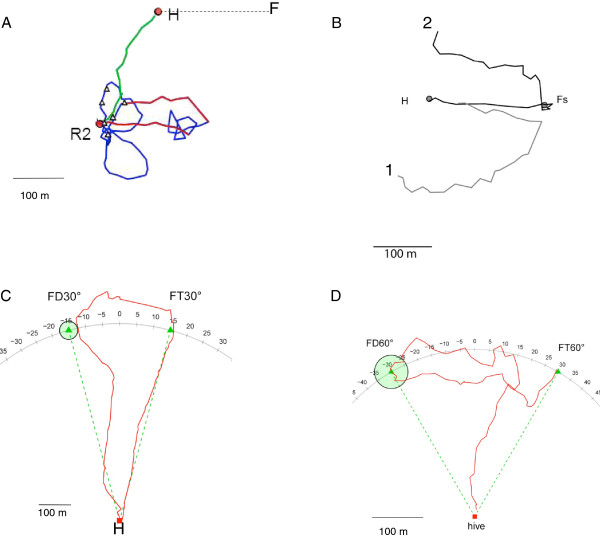Figure 2.

Radar tracks of navigating honeybees under four different conditions. A. Dance-directed flights and homing flights. The test bee followed a dancing bee that indicated a feeding place 200 m east of the hive. When leaving the hive she was released at the site R. She flew 200 m east (lower red line), searched briefly at the terminal of her dance-directed flight, and returned to the release site (upper red line) where she searched in systematic loops and then flew straight back to the hive (green line) [32]. B. Homing flights via the feeder. In this experiment bees foraged at the feeder (F) 200 m east of the hive. Two test bees were captured when preparing to fly back to the hive (H) and released at either 300 m south or north of the hive. After search flights they flew first to the feeder and then back to the hive [32]. C. Short-cutting flights between experienced and communicated locations. The bee was trained to a feeder (FT, triangle) 650 m north of the hive (H). After one day of no food at this feeder, she attended a dance of a bee that indicated the place FD (triangle with green circle), 650 m away from the hive and under 30° to the hive-feeder direction. She flew first to FT and then crossed over to FD, from there returning to the hive [33]. D. Short-cutting flights depend on the absolute distance between experienced and dance-indicated place. This is the same experimental design as in C, above, but with only 300 m distance between hive and FT or FD. Here bees performed short-cutting flights between FT and FD in the 60° tests as well, not only in the 30° test with distances of 650 m between hive and FT or hive and FD [33].
